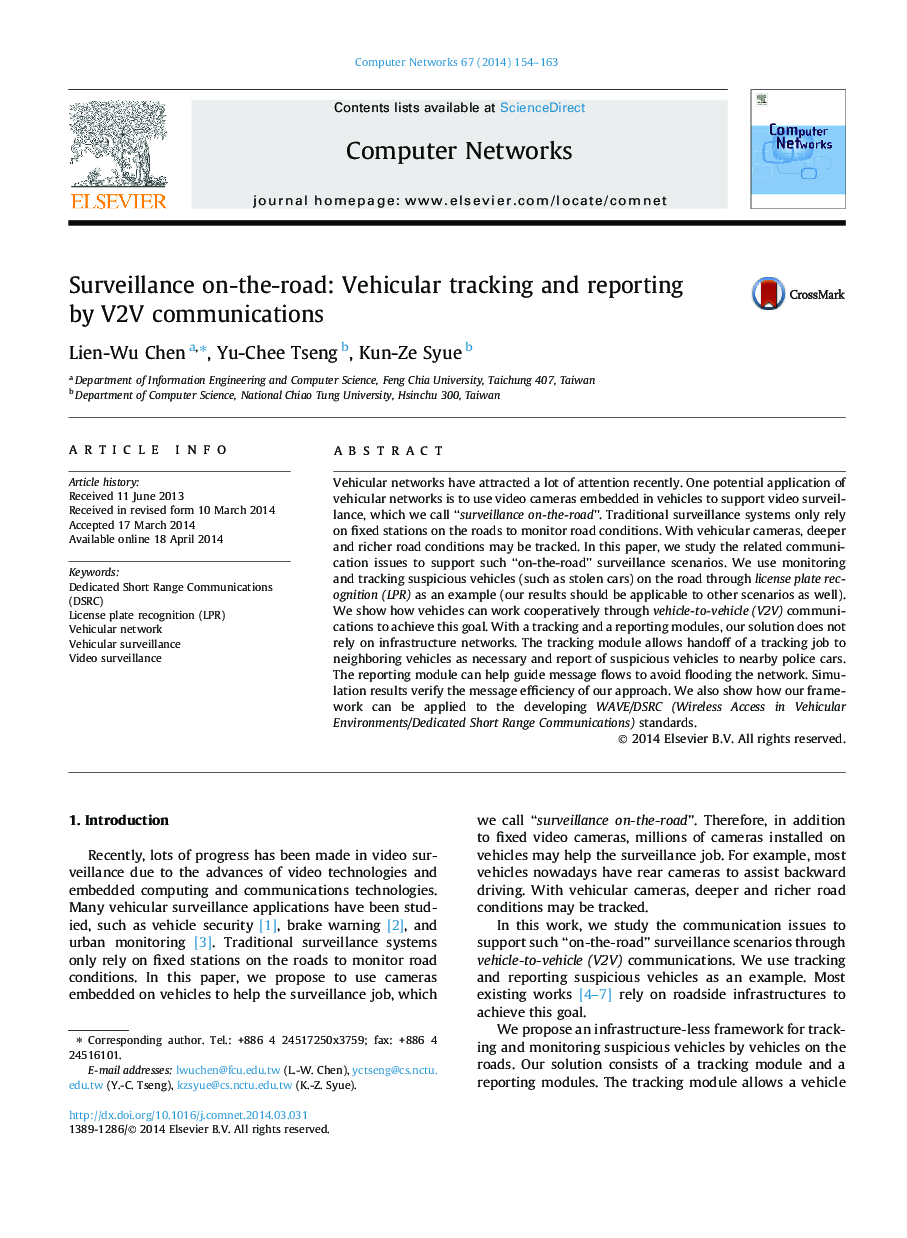| Article ID | Journal | Published Year | Pages | File Type |
|---|---|---|---|---|
| 451748 | Computer Networks | 2014 | 10 Pages |
Vehicular networks have attracted a lot of attention recently. One potential application of vehicular networks is to use video cameras embedded in vehicles to support video surveillance, which we call “surveillance on-the-road”. Traditional surveillance systems only rely on fixed stations on the roads to monitor road conditions. With vehicular cameras, deeper and richer road conditions may be tracked. In this paper, we study the related communication issues to support such “on-the-road” surveillance scenarios. We use monitoring and tracking suspicious vehicles (such as stolen cars) on the road through license plate recognition (LPR) as an example (our results should be applicable to other scenarios as well). We show how vehicles can work cooperatively through vehicle-to-vehicle (V2V) communications to achieve this goal. With a tracking and a reporting modules, our solution does not rely on infrastructure networks. The tracking module allows handoff of a tracking job to neighboring vehicles as necessary and report of suspicious vehicles to nearby police cars. The reporting module can help guide message flows to avoid flooding the network. Simulation results verify the message efficiency of our approach. We also show how our framework can be applied to the developing WAVE/DSRC (Wireless Access in Vehicular Environments/Dedicated Short Range Communications) standards.
